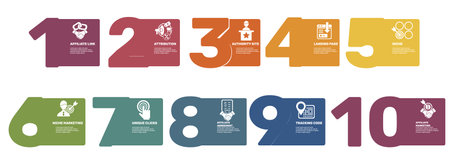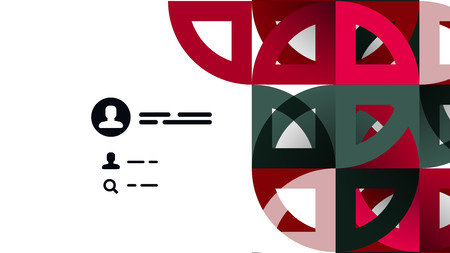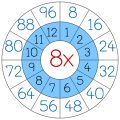Introduction: Weaving Tarot into the British Tapestry
The Tarot, with its mystical imagery and centuries-old archetypes, has long fascinated seekers of wisdom across cultures. Yet, while its origins are often traced to continental Europe, the cards themselves speak a universal language—one that can be interpreted through the unique values of any society. In this exploration, we turn our gaze to Britain, a land steeped in tradition, resilience, and an enduring sense of fair play. By examining historical Tarot archetypes alongside quintessential British virtues—such as stoicism, community spirit, honour, and intellectual curiosity—we invite a cross-cultural dialogue that reveals fresh insights into both the cards and ourselves. This journey promises not only to illuminate how ancient symbols resonate within the British context but also to foster greater understanding between traditions old and new.
2. Origins and Evolution: Tarot’s Arrival in Britain
The story of Tarot’s arrival in Britain is a fascinating tapestry woven from threads of trade, intrigue, and cultural curiosity. While the earliest known Tarot decks trace their origins to 15th-century Italy, it was not until the late 18th and early 19th centuries that Tarot began to make a noticeable impression on British society. This journey was neither swift nor straightforward; rather, it unfolded gradually, shaped by shifting social climates and evolving philosophical outlooks.
Initially, Tarot entered Britain as a curious artifact of Continental Europe, often associated with parlor games among the aristocracy. However, as the Age of Enlightenment gave way to the Victorian era, British intellectuals and mystics grew increasingly fascinated by occultism and esoteric knowledge. The publication of works such as “The Book of Thoth” and the influence of secret societies like the Hermetic Order of the Golden Dawn further cemented Tarot’s place in British culture.
Adaptation and Adoption in British Society
Tarot cards did not remain static upon their arrival. Instead, they were adapted—both visually and symbolically—to reflect distinctively British sensibilities. Artists and mystics reimagined archetypes through the lens of local traditions, literature, and folklore. For instance, the Rider-Waite-Smith deck, published in London in 1909, became one of the most influential interpretations globally. Its imagery drew upon British medieval symbolism and Christian iconography, making Tarot more accessible and resonant with British values.
Key Phases in Tarot’s British Evolution
| Period | Main Influence | Key Adaptations |
|---|---|---|
| Late 1700s | Imported from Europe | Used primarily for games; limited esoteric significance |
| 1800s | Victorian Occult Revival | Integration with spiritualism; increased focus on symbolism |
| Early 1900s | The Golden Dawn & Rider-Waite-Smith Deck | British mythological and literary motifs incorporated into card imagery |
| Late 20th Century–Present | Diversity & Modernisation | Inclusive reinterpretations; blending traditional and contemporary British values |
Cultural Resonance Across Centuries
This evolutionary path highlights how Tarot has been both a mirror to—and a participant in—the changing landscape of British values. From its role in genteel parlours to its adoption by modern seekers exploring identity and tradition, Tarot’s journey reflects an enduring dialogue between foreign inspiration and local adaptation—a testament to Britain’s unique capacity for embracing the mystical while grounding it within its own rich cultural heritage.

3. The Major Arcana: Echoes of British Ideals
The Major Arcana cards, steeped in centuries of symbolic resonance, stand as timeless mirrors to the collective consciousness of a people. In the context of British values, several cards from the Major Arcana illuminate the enduring virtues that have shaped the nation’s character.
The Tower: Resilience in Adversity
The Tower card, often associated with upheaval and sudden change, can be seen as a testament to British resilience. Through wars, fires, and revolutions, Britain has continuously rebuilt itself—much like the Tower’s promise of renewal after destruction. This archetype reflects not only the national stoicism in facing adversity but also an unwavering commitment to rise stronger from every trial.
Justice: A Tradition of Fairness
The Justice card embodies the principle of fairness and equity—cornerstones of British legal tradition. Rooted deeply in the Magna Carta and carried forth through centuries, justice as an archetype underscores Britain’s dedication to upholding law, order, and due process. It is this commitment that has inspired confidence both domestically and abroad in the integrity of British institutions.
The Hierophant: Respect for Heritage
In Tarot, The Hierophant symbolises tradition, ritual, and continuity—qualities central to British identity. From royal ceremonies to parliamentary customs, reverence for heritage is woven into the fabric of national life. The Hierophant reminds us that honouring longstanding traditions provides a sense of stability and belonging, serving as a guiding light through periods of change.
The Strength Card: Quiet Fortitude
The Strength card resonates deeply with the British ideal of stoicism—the quiet endurance celebrated during moments such as the Blitz or challenging economic times. Rather than forceful action, this archetype speaks to gentle perseverance and inner resolve, qualities cherished throughout Britain’s history and immortalised in its literature and folklore.
An Ongoing Dialogue Between Archetype and Nation
These selected Major Arcana cards do more than tell individual fortunes; they echo the core values—resilience, justice, tradition, and fortitude—that have defined Britain across generations. Through their rich symbolism, they invite reflection on how these virtues continue to shape both personal journeys and national identity today.
4. Everyday Reflections: The Minor Arcana and British Social Fabric
The Minor Arcana, often regarded as the tapestry of everyday existence within the Tarot, offers a nuanced lens through which one may examine the subtle intricacies of British society. Each suit—Wands, Cups, Swords, and Pentacles—serves as a mirror reflecting distinct facets of daily life, class structures, and the enduring societal expectations that have shaped Britain across centuries.
The Suits as Social Metaphors
In the context of British culture, the four suits can be seen as archetypes for traditional societal roles and values. Their symbolism resonates with the historical division of labour, aspirations, and emotional landscapes familiar to those steeped in British tradition.
| Suit | Symbolic Association | British Reflection |
|---|---|---|
| Wands | Enterprise & Ambition | Innovation and industrial spirit; echoes of Victorian entrepreneurship |
| Cups | Emotion & Community | Sensitivity to communal ties; the spirit of village life and civic duty |
| Swords | Intellect & Conflict | Debate, wit, and reason; hallmarks of public discourse from Parliament to local forums |
| Pentacles | Material Stability & Labour | The working ethic; stewardship of land, commerce, and practical affairs |
The Court Cards: Echoes of British Hierarchy
The court cards—Pages, Knights, Queens, and Kings—embody the enduring presence of hierarchy within British society. These figures parallel the stratified nature of historic class systems and expectations that persist in modern times.
| Court Card | Traditional Role | British Societal Parallel |
|---|---|---|
| Page | Youth & Learning | The apprentice or young squire; hope for upward mobility through education or service |
| Knight | Action & Service | The dutiful civil servant or soldier; defenders of tradition and national pride |
| Queen | Nurture & Influence | The matriarch; reminiscent of household authority or influential figures in social reform movements such as the suffragettes |
| King | Authority & Governance | The ruling elite; echoes of monarchy and parliamentary leadership guiding national direction |
Subtle Expectations in Daily Life
The Minor Arcana’s images capture not only grand gestures but also the understated rituals—afternoon tea shared among neighbours (Cups), industrious gardening (Pentacles), or spirited debate over current affairs (Swords). These cards serve as reminders of the quiet dignity found in routine acts, reinforcing British values such as resilience, civility, and respect for heritage.
An Enduring Legacy in Modern Times
Today’s Britain continues to be shaped by these layered traditions. While class distinctions blur in an increasingly egalitarian society, the echoes of historical roles persist in language, customs, and collective memory. Through the Minor Arcana, we glimpse a living archive: snapshots of ordinary lives woven into the rich fabric that is uniquely British.
5. Iconic Figures: Tarot Archetypes and British Historical Personalities
The enduring resonance of Tarot archetypes across centuries can be vividly seen when we align these symbolic figures with celebrated personalities from British history. In doing so, we are offered a lens through which to examine not only the mythic dimensions of leadership, wisdom, and transformation, but also the distinctive threads that form the fabric of British national character.
The Magician and Sir Isaac Newton
The Magician, a card representing mastery over natural forces and the power of innovation, finds its parallel in Sir Isaac Newton. Revered as one of Britain’s greatest minds, Newton’s revolutionary insights into physics and mathematics evoke the Magician’s command of hidden knowledge and his ability to translate vision into reality. Through Newton, we see the archetype’s emphasis on intellect, resourcefulness, and the transformative potential of discovery—values deeply woven into Britain’s legacy of scientific achievement.
The Empress and Queen Victoria
Queen Victoria stands as a living emblem of the Empress archetype—a figure synonymous with fertility, nurturing authority, and the flourishing of culture. Under Victoria’s reign, Britain experienced profound social and industrial growth. The nurturing aspect of the Empress is mirrored in Victoria’s role as a matriarch not just to her family but to an entire empire, embodying ideals of stability, continuity, and benevolent governance.
The Hierophant and Thomas More
The Hierophant represents tradition, moral guidance, and spiritual leadership. Sir Thomas More, noted for his steadfast adherence to conscience and faith—even unto martyrdom—embodies this archetype in British history. His commitment to principle above personal gain reflects the value placed on integrity within public life, highlighting how mythic symbolism intersects with historical reality to define the contours of national virtue.
The Tower and Winston Churchill
In times of upheaval, The Tower signals sudden change and revelation. Winston Churchill’s leadership during World War II evokes this archetype; he stood at the helm during one of Britain’s most perilous hours, guiding the nation through destruction towards renewal. The interplay between crisis and resilience found in both Churchill’s story and The Tower card speaks to Britain’s reputation for stoicism amid adversity.
Myth Meets Memory
By mapping these archetypal figures onto real individuals from British history, we reveal a powerful dialogue between myth and memory. Such connections do more than illuminate aspects of individual character—they provide enduring templates for collective aspiration. Through this alignment of Tarot archetypes with storied lives, we witness how British values are continually shaped by a blend of imagination, tradition, and lived experience.
6. Contemporary Resonance: Tarot, Identity, and Modern British Values
In todays Britain, the Tarot continues to captivate individuals from all walks of life, weaving its archetypal symbolism into the fabric of modern identity. The cards, once associated primarily with mysticism or fortune-telling, are now often embraced as tools for personal reflection and self-discovery—a shift that mirrors the evolving values of contemporary British society.
Reflection of Diversity and Inclusivity
Modern Britons live in a society celebrated for its diversity and inclusivity. The Tarot’s archetypes—The Fools open-mindedness, The Empresss nurturing spirit, or The Hierophants wisdom—resonate deeply with a culture that values acceptance and understanding. Many now reinterpret these figures through lenses shaped by multiculturalism and social progress, finding new meaning in their ancient forms.
A Mirror for Social Change
Tarot also acts as a subtle commentator on shifting societal norms. Archetypes like The Justice card speak to the British pursuit of fairness and equality under the law, while The Tower may remind us of the necessity—and sometimes the inevitability—of challenging outdated institutions. In this way, Tarot remains relevant by echoing both the aspirations and anxieties present within contemporary discourse.
Challenging Tradition, Embracing Growth
The interplay between tradition and innovation is central to British identity. While many cherish Tarot’s historical roots, there is an increasing willingness to challenge traditional interpretations and adapt them to current times. For example, the archetype of The Emperor may be reimagined not only as authority but also as responsible leadership attuned to collective needs—reflecting a modern appreciation for accountability and empathy among leaders.
Personal Empowerment in Uncertain Times
In a period marked by rapid change and uncertainty—whether political, economic, or environmental—the Tarot offers Britons a way to navigate complexity with resilience. It encourages introspection and mindfulness; qualities long admired in British culture. Each card drawn provides an opportunity to affirm personal agency and reflect upon ones place within the wider community.
A Continuing Conversation
Ultimately, the enduring appeal of Tarot lies in its ability to foster dialogue between past and present values. For many contemporary Britons, these archetypes do not merely preserve history; they invite ongoing discussion about what it means to belong, to lead, and to grow within a modern society. Thus, Tarot remains not only a mirror but also a catalyst for self-understanding and collective evolution in Britain today.
7. Conclusion: The Enduring Bridge Between Symbolism and British Identity
As we reflect upon the intricate tapestry woven by historical Tarot archetypes and their resonance within British values, it becomes evident that these symbols serve as more than mere tools of divination. They represent a living dialogue—a bridge—between the ancient and the contemporary, between tradition and transformation. In Britain, where heritage is both celebrated and questioned, Tarot’s enduring motifs mirror the nation’s own journey: steadfast in its roots, yet ever-adaptive to change. Much like the Monarch or the Hermit cards, British society upholds continuity while embracing renewal. The archetypes remind us that symbolism evolves alongside culture; interpretations shift as collective identity reshapes itself in response to time and circumstance. This ongoing relationship between Tarot and Britishness highlights an essential truth: symbols endure because they adapt, reflecting both who we have been and who we are becoming. As new generations engage with these age-old images, they reaffirm the dynamic interplay of history and modernity, ensuring that the wisdom of the past continues to inform the evolving spirit of Britain.


